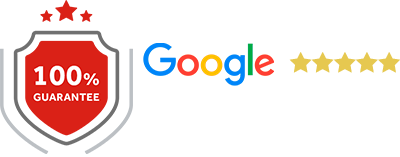What Are Nested Department Listings? Multi-service businesses face a visibility problem on Google. One listing. One primary category. One chance to show up when customers search. A home services company with pest control, lawn care, and pool cleaning crews all working...
Organic SEO Optimization
Blog Category pages subscription form.

What is Organic SEO Optimization?
Growing Traffic Naturally
Organic SEO Optimization focuses on improving a website’s visibility in search engine results without using paid advertisements. It involves optimizing content, technical elements, and user experience to rank higher for relevant search queries. Organic SEO is a long-term strategy that aims to attract quality traffic by ensuring that search engines can easily understand the content and context of a website, making it a key component for sustainable online growth.
Featured Articles
Can Nested Department Listings on Google Business Profile Really Triple Your Search Visibility?
What's New

The Future of SEO in 2026: Why Clarity and AI Will Decide Who Wins
Last week, two of our team members at ASTOUNDZ jumped into the grind at the State of Search SEO conference in Grapevine, Texas.

Google’s September Shake-Up: What Really Happened with SEMrush Data — and How ASTOUNDZ Keeps You Covered
If your keyword rankings or SEMrush reports suddenly dropped in September, you weren’t alone.

The Basics of Paid Search and Why It’s Crucial for Modern Businesses
In today's digital world, it's more important than ever for businesses to stand out online. One of the best ways to do this is through paid search. But what exactly does that mean? Paid search is when businesses pay for their ads to appear at the top or bottom of...

The Future of AI in Digital Marketing Campaigns
AI is changing the way brands connect with people. In digital marketing, AI helps businesses make smarter decisions by understanding customer behavior, creating personalized content, and automating tasks. Let's take a closer look at how AI is shaping the future of...

How Emerging Technology is Changing Website Development
Website development is changing fast! New technologies are popping up all the time, and they're making websites more powerful, interactive, and user-friendly. In this article, we're going to explore the cool emerging technologies that are shaping web development today...

Mobile-First Design: Adapting to the Increasing Use of Smartphones
In today's digital world, the way we access websites has changed drastically. People are spending more time on their smartphones than ever before, and businesses need to keep up with this shift. Mobile-first design is the solution. This approach focuses on creating...

Social Media Ads: Which Platforms Work Best for Your Industry?
Social media ads are a game-changer for businesses today, offering a world of potential. With billions of people using social media every day, platforms like Facebook, Instagram, TikTok, and LinkedIn are more than places to post pictures and updates—they're powerful...

Top Benefits of Voice Search Optimization for E-Commerce
In today's fast-paced digital world, online shopping is more popular than ever. As e-commerce continues to grow, new technologies are shaping the way we search for products and make purchases. One of the most exciting developments is voice search optimization. More...

Organic SEO Trends in 2025: Navigating the Future of Search Engine Optimization
In the ever-evolving world of digital marketing, Search Engine Optimization (SEO) continues to play a pivotal role in driving online visibility, traffic, and conversions. As we move into 2025, SEO remains at the core of online marketing strategies, but its landscape...

Tracing the Roots
The Historical Journey of Organic SEO
The concept of Organic SEO dates back to the early days of search engines, where simple techniques like keyword inclusion and meta tags determined a website’s ranking. As search engines evolved, particularly with the introduction of Google, the focus shifted to quality content, backlinks, and user experience. Today, Organic SEO is more sophisticated, involving on-page and off-page optimization, technical improvements, and content strategies to meet the ever-changing algorithms of search engines.
Benefits and Drawbacks of Effective Organic SEO Optimization
Pros
- Cost-Effective: Organic SEO attracts traffic without paying for clicks, making it a cost-effective strategy for long-term growth.
- Builds Credibility and Trust: Higher organic rankings in search results build credibility with users, making them more likely to trust your website.
- Sustainable Traffic: Unlike paid ads, the results of organic SEO can last for months or years, generating continuous traffic.
- Improves User Experience: Optimizing a website for search engines often leads to a better overall user experience, benefiting both visitors and rankings.
- Higher Click-Through Rates (CTR): Users are more likely to click on organic search results than paid ads, leading to higher click-through rates for top-ranking pages.
Cons
- Slow Results: Organic SEO can take several months to show significant improvements in search engine rankings.
- Algorithm Changes: Search engines frequently update their algorithms, which can impact website rankings and require constant adaptation.
- Competitive Markets: Ranking for competitive keywords requires time, effort, and resources, especially in saturated markets.
- Ongoing Effort Needed: To maintain rankings, continuous optimization, content updates, and link-building efforts are required.
- Limited Control: Unlike paid ads, you cannot directly control the placement of your website in search results, as it depends on search engine algorithms.
10 FAQs about Organic SEO Optimization
What is organic SEO?
Why is organic SEO important for websites?
How do I start optimizing for organic SEO?
What are on-page and off-page SEO?
How long does it take to see results from organic SEO?
What is a backlink in SEO?
How do I measure the success of organic SEO efforts?
What is keyword stuffing, and why should it be avoided?
How does content quality affect organic SEO?
What are common organic SEO mistakes to avoid?
Contact Us
Glossary of Organic SEO Optimization Terms
Organic SEO:
Optimizing a website to improve its visibility in search engine results without using paid advertising, focusing on natural traffic growth.
On-Page SEO:
Techniques applied directly on a website to improve its search engine rankings, such as optimizing meta tags, headers, and content.
Off-Page SEO:
Strategies performed outside of a website to improve its authority, such as building backlinks and promoting content on external platforms.
Backlink:
A hyperlink from one website to another, considered a vote of confidence that can boost a site’s search engine rankings.
Keyword Research:
The process of identifying popular search terms that users enter into search engines, used to guide content creation and optimization.
Content Marketing:
Creating and sharing valuable content to attract and engage an audience, supporting SEO by driving traffic and building authority.
Link Building:
The practice of acquiring high-quality backlinks from other websites to improve a site’s authority and search engine rankings.
Technical SEO:
Optimizing the technical aspects of a website, such as site speed, mobile-friendliness, and structured data, to improve search engine rankings.
Meta Tags:
HTML elements like meta titles and descriptions that provide search engines with information about the content of a page.
Crawlability:
A website’s ability to be discovered and indexed by search engine bots, which is essential for appearing in search results.
Indexing:
The process by which search engines store and organize web pages in their database to make them available for search results.
SERP (Search Engine Results Page):
The page displayed by search engines in response to a user’s search query, showing both organic and paid results.
Bounce Rate:
The percentage of visitors who leave a website after viewing only one page, which can affect a site’s search engine rankings.
Domain Authority (DA):
A score that predicts how well a website will rank on search engines, based on the overall strength of its backlink profile.
Page Authority (PA):
A score that predicts how well a specific web page will rank in search engine results, based on its content and links.
Content Optimization:
The process of improving content to make it more relevant and appealing to both users and search engines.
User Intent:
The purpose behind a user’s search query, which should guide the creation of relevant content for better SEO.
Anchor Text:
The clickable text in a hyperlink, used to describe the linked page and help search engines understand its relevance.
Structured Data:
Code that helps search engines understand the content of a website, often leading to enhanced search results like rich snippets.
Alt Text:
A description of an image used in HTML, which helps search engines understand the content of images on a website.
Local SEO:
A branch of SEO that focuses on optimizing a website to attract local traffic from search queries.
Content Freshness:
Regularly updating website content to ensure it remains relevant and current, which can positively impact SEO.
Mobile Optimization:
Ensuring that a website is fully functional and user-friendly on mobile devices, crucial for modern SEO strategies.
Organic Traffic:
Website visitors who come through unpaid search engine results, which are influenced by effective SEO.
Title Tag:
An HTML element that specifies the title of a web page, displayed as the clickable headline in search engine results.
XML Sitemap:
A file that lists all the pages of a website, helping search engines understand its structure for better indexing.
Rich Snippets:
Enhanced search results that display additional information like reviews or recipes, improving click-through rates.
Keyword Density:
The frequency of a keyword appearing in content relative to the total word count, which should be balanced to avoid keyword stuffing.
Long-Tail Keywords:
Specific, longer search phrases that are often easier to rank for and attract highly targeted traffic.
SEO Audit:
A comprehensive analysis of a website’s current SEO status, identifying strengths, weaknesses, and areas for improvement.
HTTPS:
A secure version of HTTP that encrypts data between a user’s browser and the website, important for SEO and user trust.
Citations:
Mentions of a business’s name, address, and phone number (NAP) on other websites, critical for local SEO.
Canonical Tag:
An HTML tag that helps prevent duplicate content issues by specifying the preferred version of a webpage.
Internal Linking:
Creating links between different pages of a website to improve navigation and help search engines understand its structure.
Organic CTR:
The percentage of users who click on a website link in organic search results, indicating how appealing the listing is.
Content Gap Analysis:
Identifying missing content opportunities that can help a website rank for additional keywords and topics.
SEO Tools:
Software like Ahrefs, SEMrush, and Google Search Console that assist in analyzing and improving a website’s SEO.
Google Algorithm Updates:
Changes made to Google’s ranking algorithms that can impact website rankings and require adaptation of SEO strategies.
Evergreen Content:
Content that remains relevant and valuable over time, continuing to attract traffic long after it is published.
Link Juice:
The value or authority passed from one website to another through backlinks, influencing search engine rankings.
Content Silos:
Organizing website content into structured categories to improve user navigation and SEO.
SERP Features:
Elements like featured snippets, knowledge panels, and local packs that appear in search results, offering opportunities for increased visibility.
SEO Strategy:
A plan that outlines the steps and techniques used to improve a website’s search engine rankings and attract more organic traffic.





